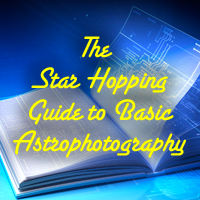This useful 38 page guide provides an introduction to the basic types of astrophotography, for those of you that always have been interested in this exciting activity, but never knew where to begin. This guide covers:
- astrophotography with a tripod
- piggyback astrophotography
- prime focus astrophotography
- using an autoguider to take astrophotos.
From the guide:
“One of the main challenges with visual astronomy, especially with beginners, is that deep sky objects generally appear very different in the eyepiece of the telescope as they do in the pictures they have seen that initially attracted them to the hobby; in the telescope, most objects appear ghostly white and without color. That’s because the sensory cells in our eyes just are not excited enough by the dim levels of light coming from these objects through the eyepiece. Not to say that the photons are dull and boring, it’s just that they are dim!
But everything changes when you use a camera and start taking time exposures: setting your camera to open its shutter for much longer than usual, as compared to when you take terrestrial photos or normal snapshots. These pale deep sky objects then appear in vivid colors like reds, pinks, greens, and blues, and are sublime to behold. When you capture your first successful astrophoto and see that color, it is absolutely amazing and you will definitely be hooked.”
This guide will explain the basic methods on how to get started in the exciting world of astrophotography.

